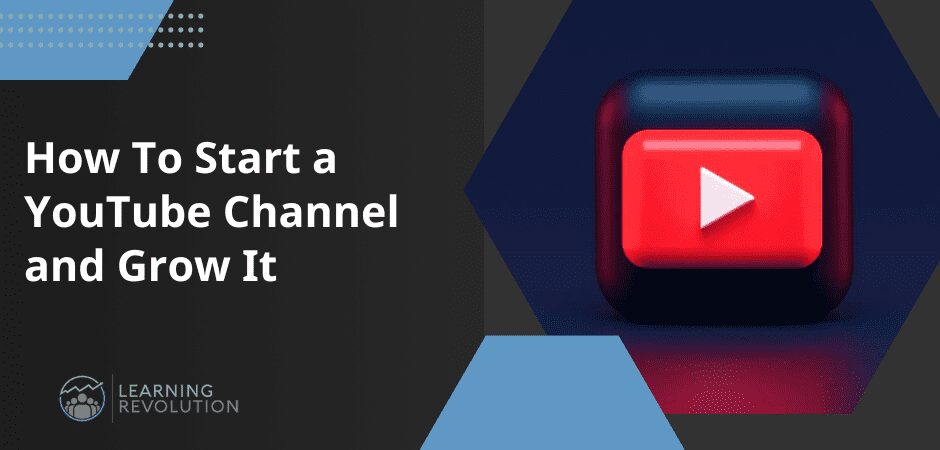

Starting a YouTube channel and regularly publishing videos is among the fastest ways to establish authority in your niche and fuel the growth of your expertise-based business.
Why? Because YouTube is the world’s biggest video streaming platform and the second most popular search engine where users are already looking for expert guidance and educational content.
One-third of Internet users watch tutorials or how-to videos weekly, and most of them do it on YouTube.
By creating valuable free YouTube content for your audience, you can establish your authority and build a high-conversion funnel for your paid services and products. In other words, you can make money with YouTube.
But to do that, you need to start a YouTube channel first.
In this article, we’ll not only tell you how to make a YouTube channel the right way but also share proven strategies to help you grow your subscriber base.
Let’s dive in.
How YouTube Helps You Sell Your Expertise
Numerous creators and experts use YouTube to grow their subscriber base and generate leads for their high-ticket offerings.
For example, Brain Dean of Backlinko has a premium SEO Course he opens up once a year. But before launching that course, Brain, who’s already an influencer in the SEO niche, decided to start a YouTube channel and publish a ton of free content on it.
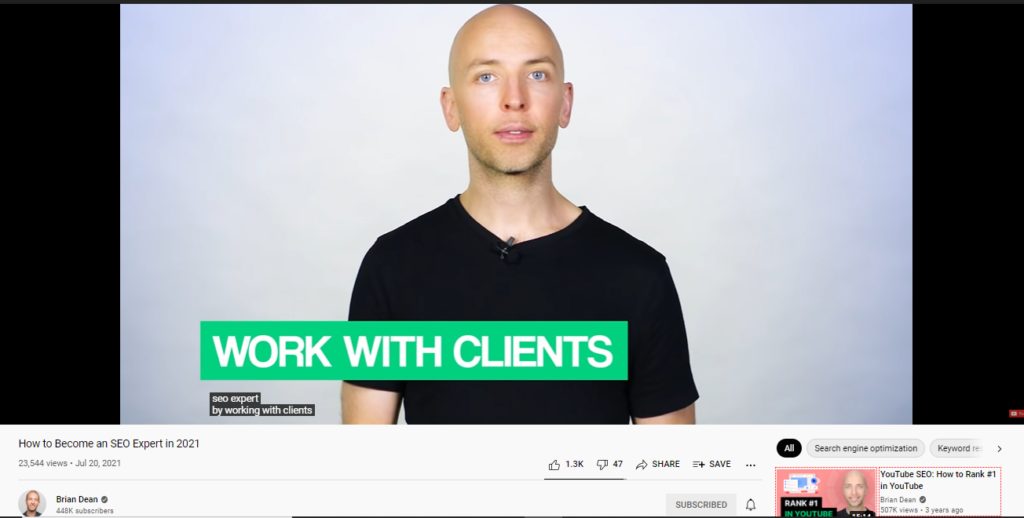

His videos helped him increase authority and give his prospects a preview of his main course’s content quality.
It’s a classic lead generation strategy that works in every industry.
Here’s an example from a different niche of how to create a YouTube channel and use it strategically.
Tiago Forte, a productivity consultant, has an active YouTube channel with close to 20 thousand subscribers. He regularly publishes free content on various productivity-related topics and uses them to generate leads for his main high-ticket course, “Building A Second Brain,” priced at $6000.
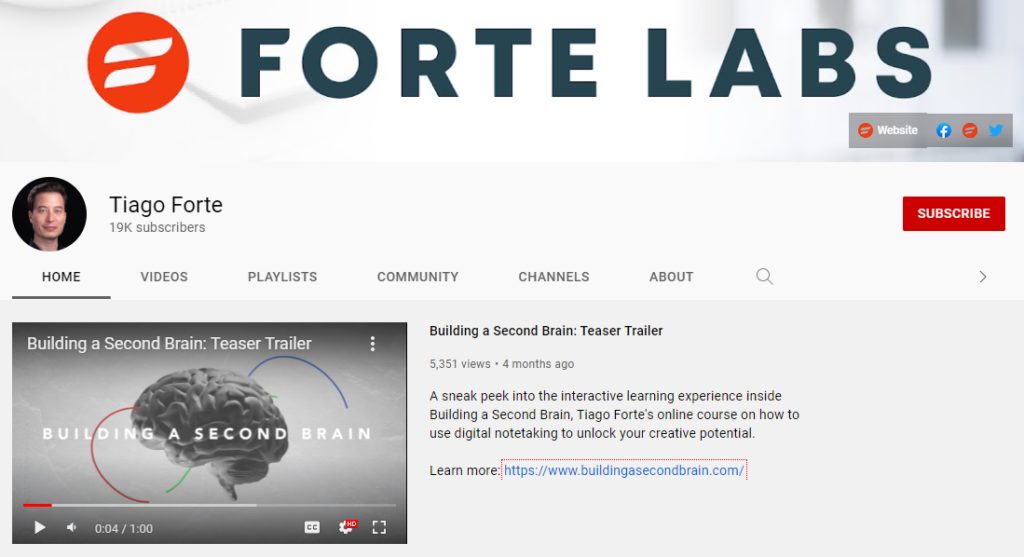

Why is YouTube such a great platform for generating leads for your online courses?
Because it allows your prospects to see your work in action and evaluate the value of your content before signing up for a premium course.
Plus, with regular video appearances – including live streaming on YouTube – you quickly build a connection with your audience, which helps persuade them to buy your course.
This is why an active and popular YouTube channel can quickly become your most significant source of leads and customers (if you consistently work on growing it.)
If I had no course or no audience, I would just start creating YouTube videos. And what I would do is figure out what people are searching, what they are typing for and there are a lot of tools out there – you can use Ubersuggest for this. Type in the keywords, figure out what people are searching for and create videos on these topics.
Neil Patel (Source)
How to Start a YouTube Channel From Scratch
There’s really no rocket science involved when it comes to how to make a YouTube channel. You can easily do it in five steps that take 5-10 minutes.
However, starting a YouTube channel the right way requires a bit more planning and thinking.
You need to think strategically about starting a YouTube channel and think of its long-term goals. Because sometimes, creating your YouTube channel without considering your topics, audience, and long-term goals can cause problems later down the road.
So, here’s my step-by-step process for how to make a YouTube channel.
1. Choose a YouTube Niche
There are more than 40 million active YouTube channels right now. But more than 80% of them have less than 1000 subscribers.
So, one thing is pretty clear: Starting a YouTube channel won’t attract subscribers automatically.
If you want to start a YouTube channel that grows to 1K, 100K, or even a million subscribers, you need to position yourself differently from the start.
YouTube channel positioning is just like brand positioning.
You need to appeal to a specific audience instead of targeting every topic under the sun.
In other words, you need to choose a YouTube niche.
As someone visiting Learning Revolution, there’s a good chance you are already an expert in a niche. So, your job is much easier when fine-tuning your YouTube niche selection.
Here are some of the things you need to consider while positioning your channel.
Topics
Being an expert in a particular niche is great, but if there aren’t enough people searching for it on YouTube, you won’t be able to grow your channel.
How do you know if a topic is in demand? Just search YouTube and see if there are popular channels and videos in that niche.
For example, we searched “dog training” on YouTube, and it’s clear from the results that there’s a lot of demand for this topic.
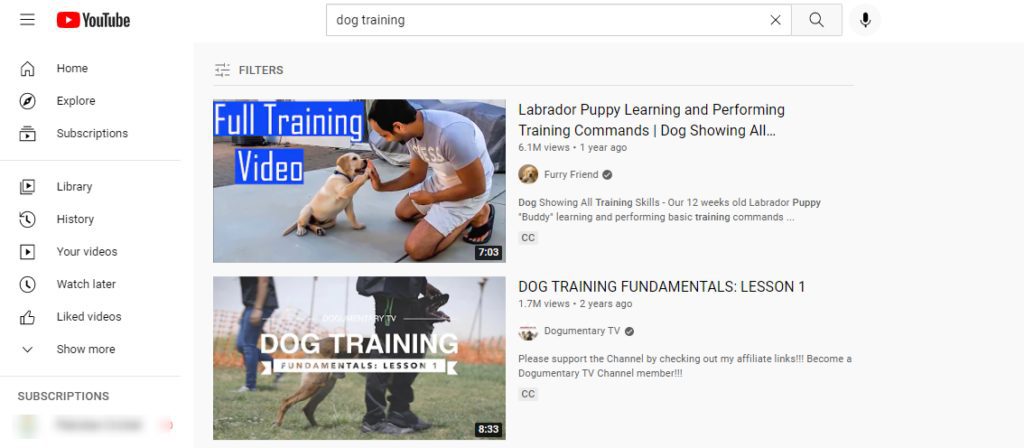

The depth of your niche is the other thing to consider.
Do you have enough topics to cover in your niche? Or will you run out of ideas after 10-15 videos? To avoid this problem, avoid over-niching.
For example, if you’re a real estate expert, create a channel about real estate investment tips in the USA instead of real estate investment in Miami or New York.
Make sure that there are enough connected topics to your niche to keep you busy for years.
Audience Needs
When choosing your niche, research your audience needs to understand what they want from you. This not only helps you plan your YouTube content in advance but also helps you evaluate your grip on a topic and determine whether you can create valuable content for your audience or not.
YouTube has a handy free audience research tool called Find My Audience.
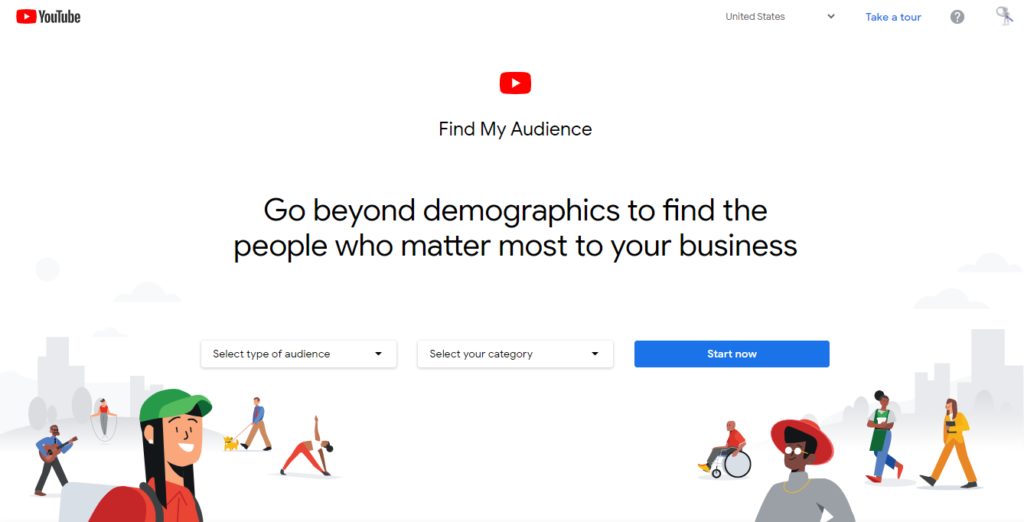

Use this tool to find the significant audience groups in your niche and identify their biggest questions.
For example, we searched for the “Health & Fitness” niche, and here are some of the major audience interests and groups Find My Audience showed me.
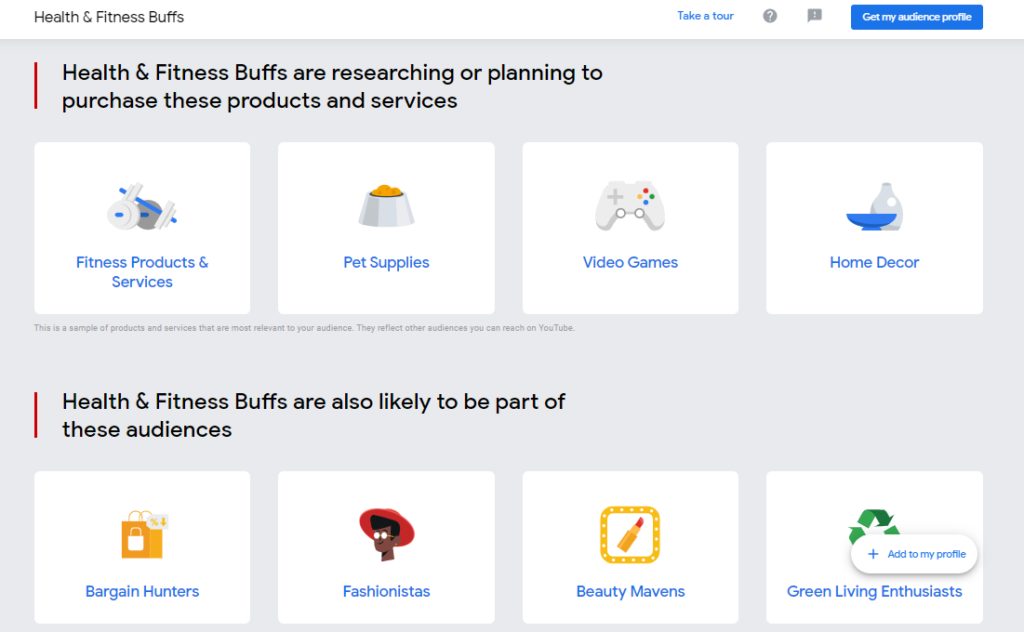

Plus, it gave me a list of the most popular channels in that niche that we could explore further to understand our target audience.
Video Types
This point is closely connected to the last one, but we’ll discuss it separately because of its significance.
What video types your audience prefer watching plays a considerable role in your channel’s growth. It will also help you determine if it’s a niche you want to enter.
For example, there are niches like productivity, health tips, and even recipes, where you don’t necessarily have to face the camera.
Here’s a recipe channel that routinely gets over a million views on every video but never shows anyone.
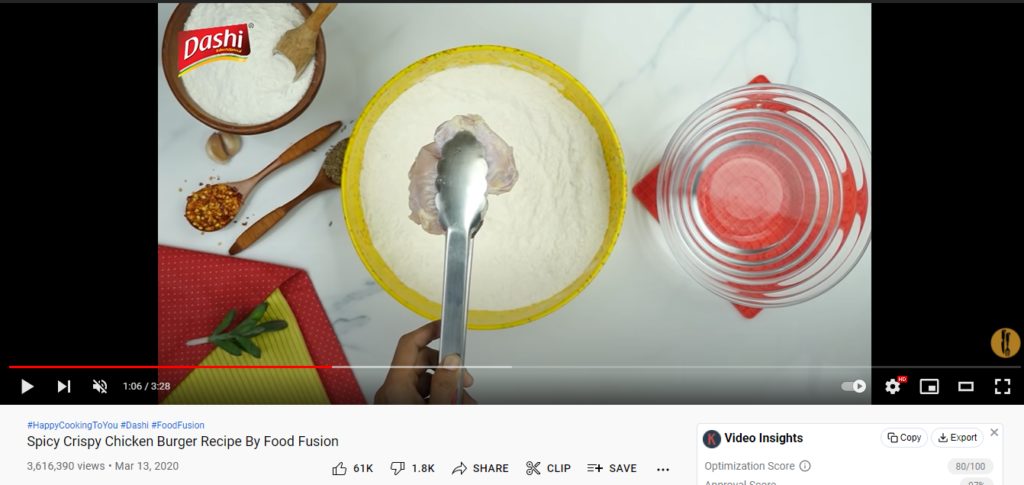

Such niches are great if you’re camera-shy.
But in many other niches, you have to be right in front of the camera all the time.
Similarly, in niches like DIY or travel, you need to show how things are done instead of just talking about them. Naturally, they require higher budgets and more effort in creating videos.
So before choosing a niche, make sure you understand the kind of videos you need to create to stand out. Otherwise, you may understand all the technical aspects of how to start a YouTube channel, but you might struggle to gain traction.
Monetization Potential
There are many ways to make money on YouTube. But the most popular methods are advertising and affiliate marketing.
Even if your objective with starting a YouTube channel is not primarily to make money from it, you should still closely evaluate the monetization potential of a niche.
Why? Because a YouTube niche with no advertisers or affiliate products strongly indicates that the average user in that niche doesn’t spend money on online products.
This ultimately hurts your prospects of selling your products and services as well.
2. Create A New YouTube Channel
Once you choose your niche, it’s time to start your YouTube channel.
Go to YouTube.com and click on Sign in.
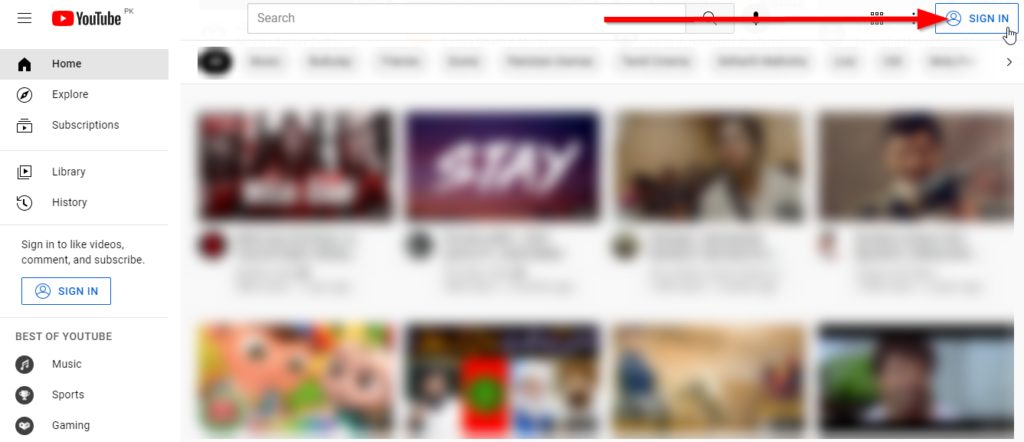

You need a Google account to start a YouTube channel. If you already have one, sign in using your credentials. Otherwise, create a new account.
After signing in, click on your account icon and select Create a channel from the menu.
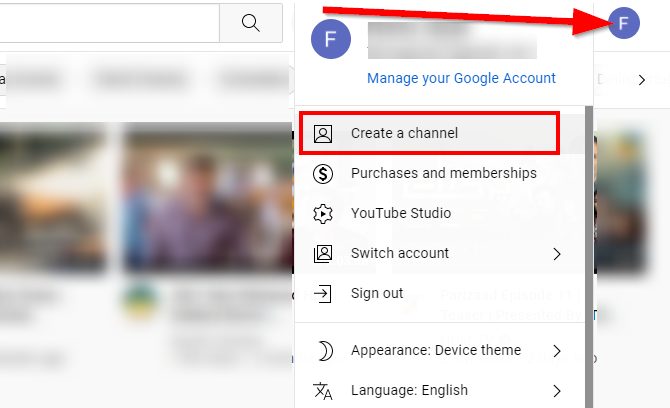

This leads you to the first step in your YouTube channel creation process, where you have to choose your channel name and icon.
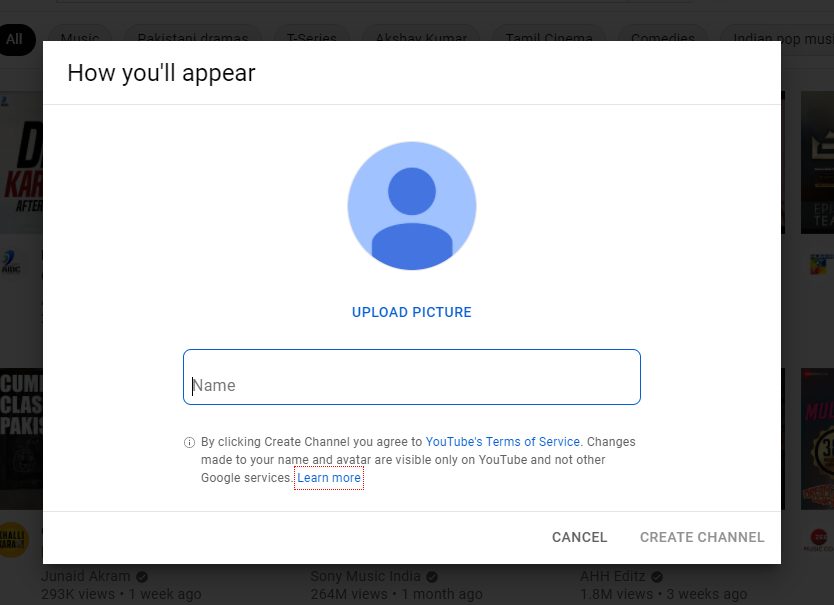

If you want to build a personal brand as a creator and expert (which we recommend), use your name for your channel.
That’s what most creators and experts do because it’s easier to remember for your audience and allows them to connect with you faster.
Here are a few examples.






But it’s completely fine if you already have an established business brand and want to start a YouTube channel for your business.
There are numerous examples of such channels.






Whatever approach you take, just make sure that your channel’s name is short, easy to remember, brandable, and sticky (like some of the examples I’ve shared).
If you can’t come up with a catchy name, try using Shopify’s free business name generator.
As for your channel icon, use your picture, preferably with a smiling face, for a personal brand channel.
For business channels, you can either use your company’s logo or design a channel icon using Canva. [TA Link]
The recommended dimensions for your YouTube channel Icon are 800 x 800 px. And because your Channel Icon appears in different shapes and sizes on YouTube, double-check that it looks OK as a round or square image at 98 x 98 px.
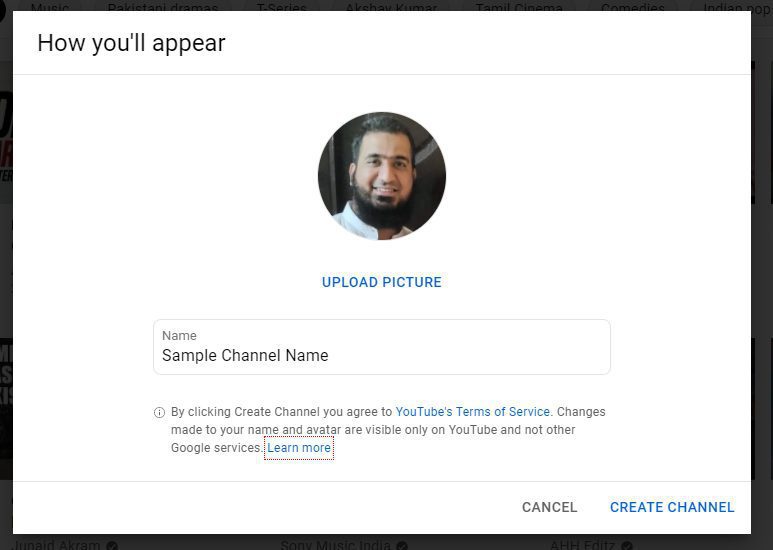

Once you’re all set, click Create Channel.
That’s it, you’ve successfully created a new YouTube channel.
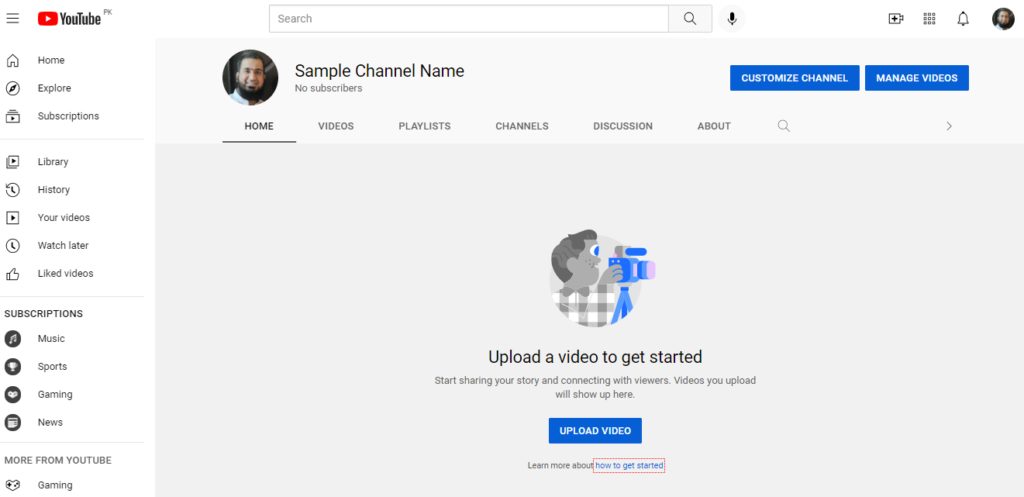

Of course, there’s no content on it. But we have to take care of a few other things before creating content.
3. Use Channel Art to Make a Strong Impression
Your YouTube channel’s header image plays a vital role in its branding and helps you highlight its central theme.
The header image of Brian Dean’s YouTube channel is a great example.
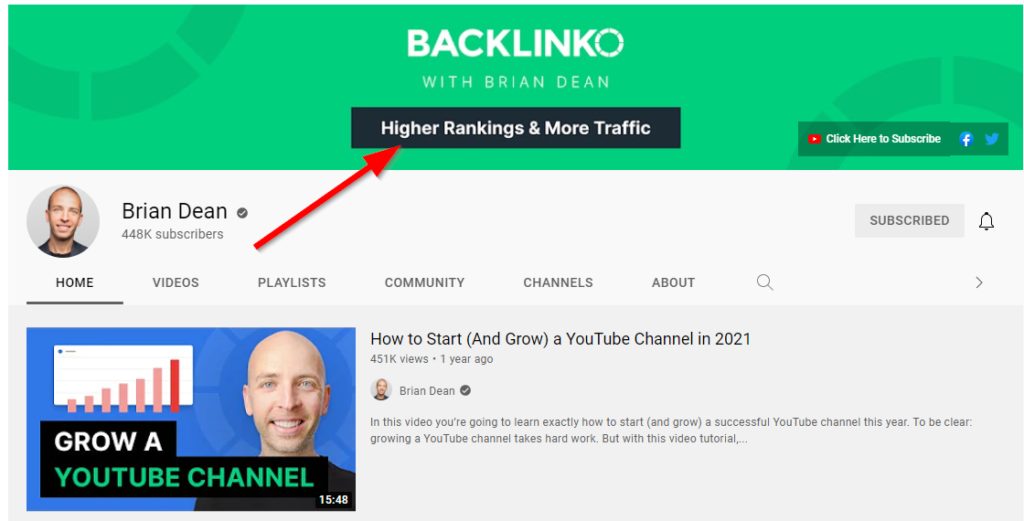

You can also use this space to share any other meaningful message with your audience. For example, Gary Vaynerchuk has used his header image to share his video schedule.
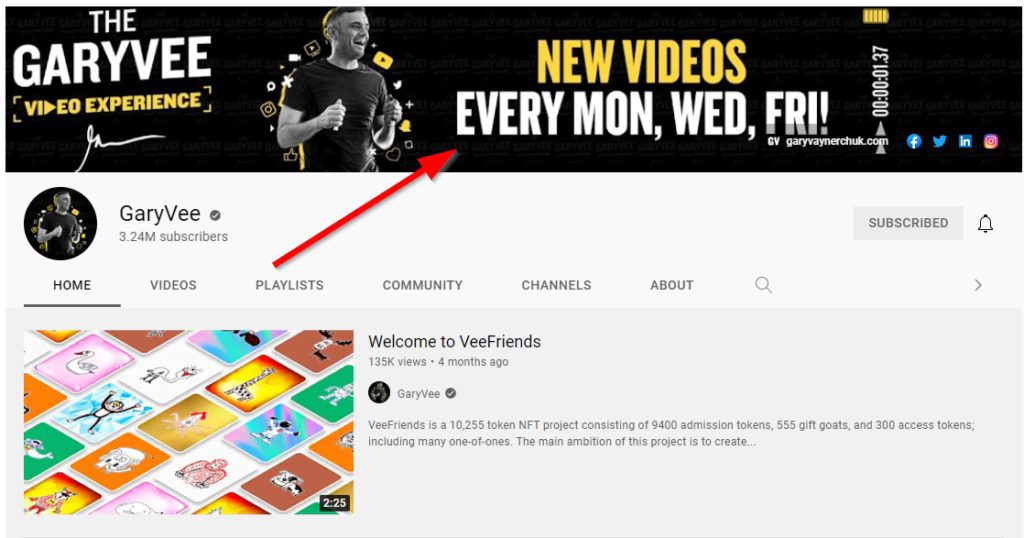

Plus, if you notice in the corner of this image, you can also add links to your website and social media profiles. Make sure they’re visible to your audience and don’t easily mix with your header image.


The recommended dimensions for your YouTube header image are 2560 x 1440 px. If your channel art has different sizes, it might not appear correctly on other devices.
4. Build Authority with Your Channel Description
Many content creators ignore their YouTube channel’s About section or just don’t put enough thought into it.
Big mistake.
Your channel description is ideal for introducing yourself/your brand and sharing reasons why people should watch your content.
Here’s a good example.
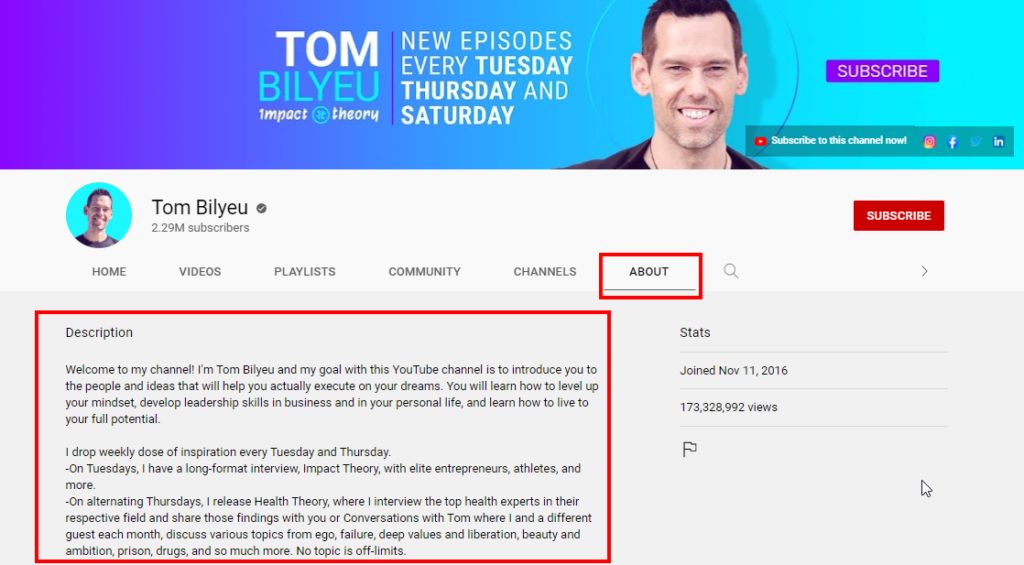

The channel description is crucial for online course creators and other expertise-based businesses because people want to know if you’re qualified to teach, coach, or consult on a topic.
Use your channel’s description to share your experience and professional background, tell people what they can expect on your channel, and why you’re a credible voice, they should trust.
5. Invest in A Channel Trailer Video
You might not be able to create a trailer video when you start your channel, but you should have it in your plans.
As the name says, a trailer video is a short cinematic video of what your channel offers. It’s an excellent resource for anyone visiting your channel for the first time.
Here’s an excellent example of a YouTube channel trailer.
It’s also a great opportunity to sign up people to your email list or any other call to action you want to promote.
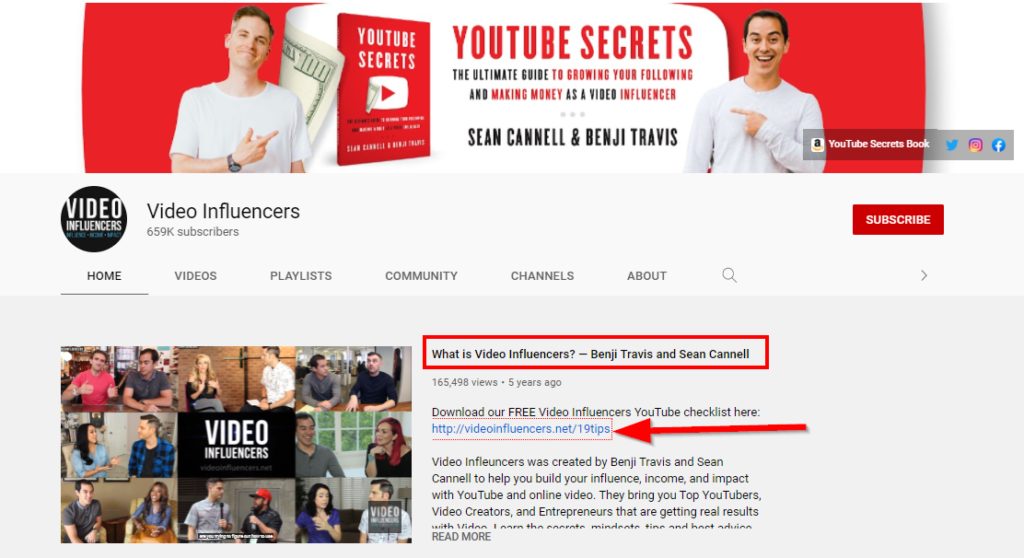

There’s no formal trailer category on YouTube but when you create one, just make it the featured video of your channel so that it’s visible to all visitors.
How To Grow Your YouTube Channel | 9 Steps to Success
Now that we’ve covered how to start a YouTube channel, let’s discuss how you can quickly grow it to 1K, 10K, or even 100K subscribers.
But before we dive in, let me say this.
You don’t need a million or even 10K subscribers to generate leads for your business. If you consistently create content, you will reach 50K or 100K subscribers in a few years.
But even when you have just a few thousand subscribers, you can still get dozens of leads from YouTube every month, provided you create high-quality content and promote it to your target audience.
Here are a few ways you can do that.
1. Invest in Your Video Quality
If you want to generate leads from your content and grow your YouTube channel, you need to produce HD videos by investing in the right video camera and other necessary equipment.
Your video’s picture quality not only makes you look professional but also has a direct impact on your video’s visibility in YouTube’s search results.
According to research, 68.7% of all videos on the first page of YouTube search are in HD (720P or 1080p).
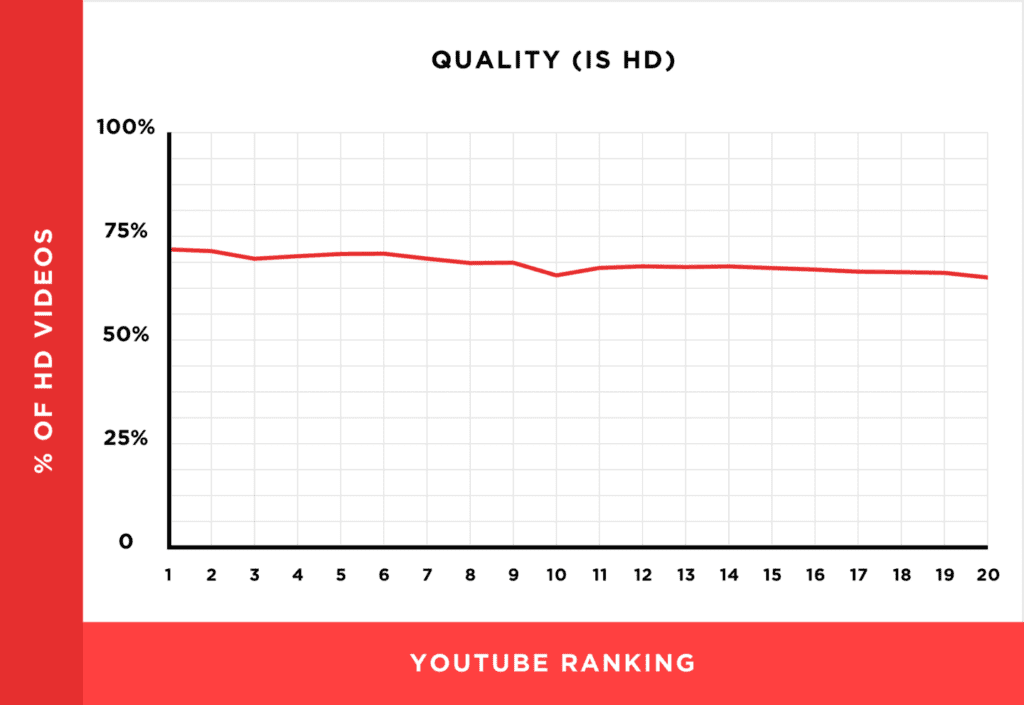

You can create 1080p videos with most new smartphones these days. But we’d recommend getting a professional video camera, mic, and lighting equipment to give your videos a cleaner, more polished look.
Not sure which equipment to buy for your videos? I’ve listed all my recommendations in this article.
2. Perform YouTube Keyword Research
YouTube is the world’s second most popular search engine after Google Search.
Once you start a YouTube channel, a huge part of promoting your videos on YouTube comes down to optimizing them for the right keywords.
How do you perform YouTube keyword research?
Start by entering a few seed keywords in YouTube search that broadly describe your niche. For example, if you’re in the online marketing niche, some of your main seed keywords could be SEO, content marketing, social media marketing, Facebook advertising, etc.
Plug those keywords in YouTube search one by one without pressing the enter key to see YouTube search suggestions.
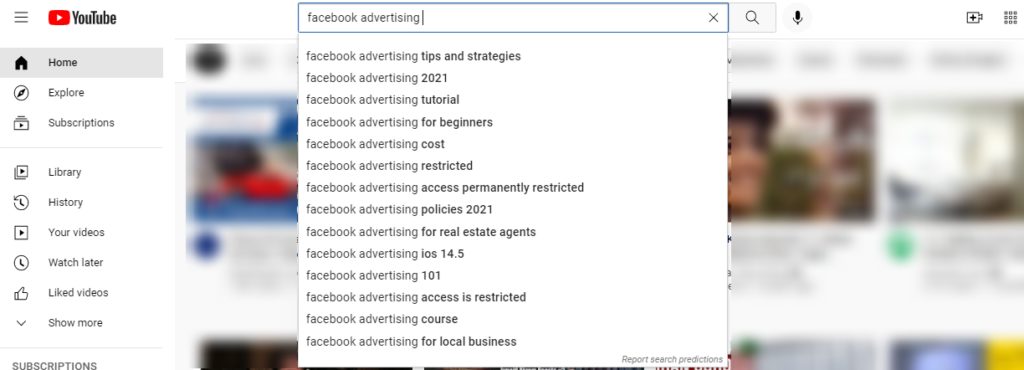

These suggestions are based on popular searches related to your seed keyword.
Some of them might be irrelevant. But many of them can be ideal topics for your YouTube videos.
To evaluate the search competition of these keywords, install TubeBuddy, a free Chrome extension.
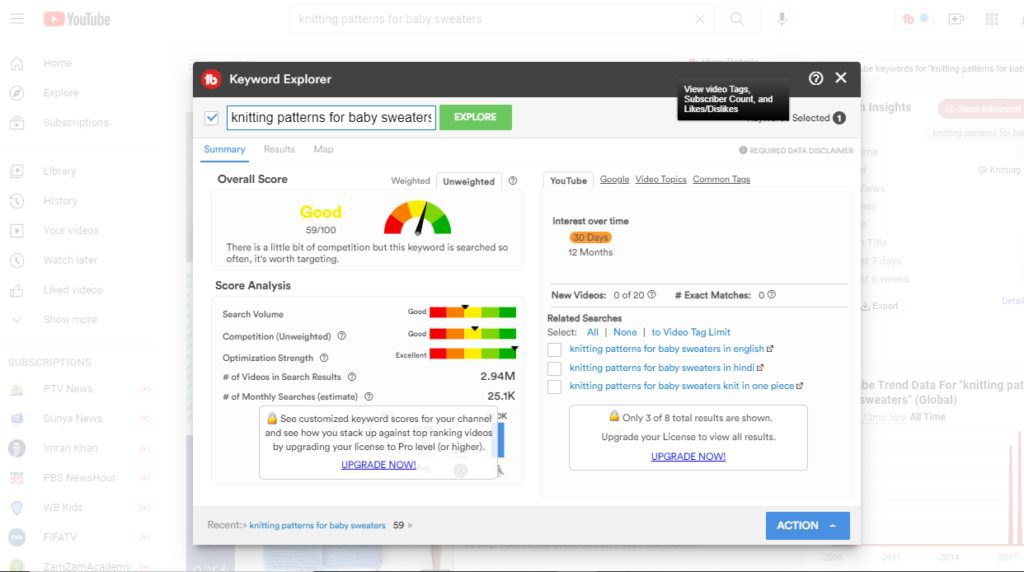

It shows you the monthly search volume and competition score for your target keywords. Plus, it gives you an overall score based on the ease of ranking for a keyword.
So before targeting any keyword that you find in your initial search, evaluate it using TubeBuddy to see if it’s worth targeting.
Let me sum up the three steps again.
1. Enter seed keywords in YouTube search.
2. Find long-tail keywords through YouTube search suggestions.
3. Evaluate relevant keywords in TubeBuddy.
Once you identify the right keywords, it’s time to optimize your video for YouTube search.
3. SEO Optimize Your YouTube Videos
Like regular SEO, YouTube search optimization is mostly about using your target keyword in the right places to help YouTube determine its relevance to user search queries.
Here are the three main areas to use your keywords.
Title
Using your target keyword in the video title has a significant impact on its search rankings. But you don’t need to use the exact match keyword.
Instead, use a compelling title that mentions your keyword in some way.
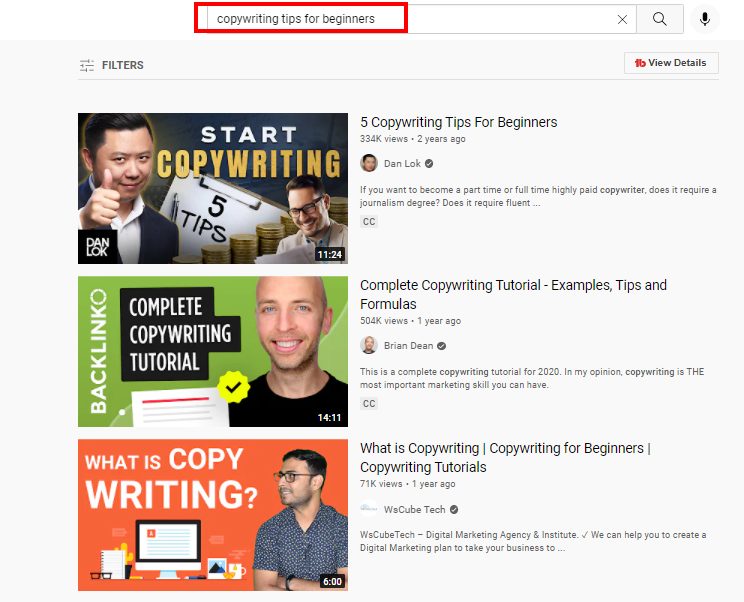

As you can see, two out of the top three videos for the “copywriting tips for beginners” use the exact keyword in the title.
The recommended YouTube title length is 70 characters. So apart from using your keyword in the title, make sure it’s compelling and generates interest.
Description
There’s no direct relationship between keyword usage in video description and search rankings. Instead, the goal of your video description is to persuade the search to click.
For example, which of these two video descriptions seem more persuasive to you?
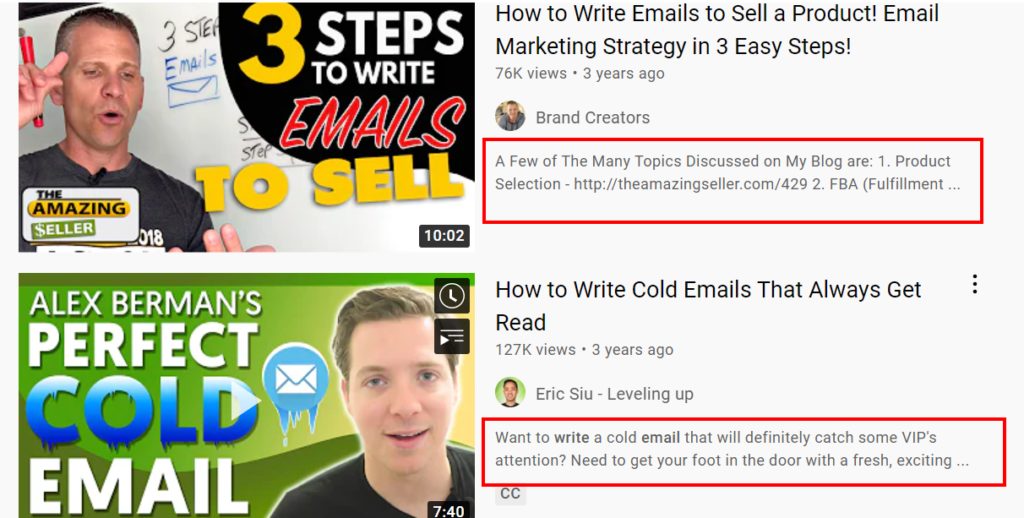

The second one, right? Because it clearly tells me what to expect in the video. But if you notice, it also uses the target keyword “writing sales emails” in a distributed form (not the exact keyword).
Tags
Video tags give YouTube a small indication of your content topic. They’re not a game-changer for your video’s rankings but using relevant keywords as video tags certainly helps.
Find out more about YouTube SEO >>
4. Optimize YouTube Videos for Watch Time
YouTube wants people to stick longer on its platform and consume as much content as possible. Because the longer a user stays, the more ads they’ll watch/click.
This is why its search algorithms promote videos with higher watch time.
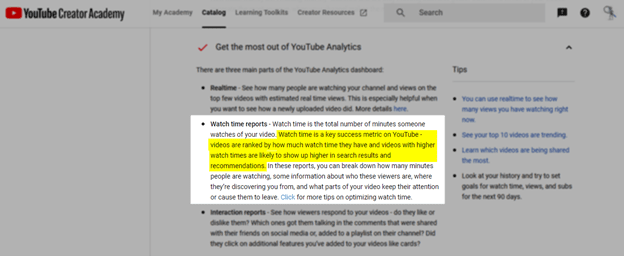

Watch time is simply the number of minutes an average user spends watching a video.
How do you increase your video’s watch time?
Create Longer Videos: Instead of creating 5-6 minute videos, cover your topic in detail and aim for 15-20 minutes per video.
Ditch Long Intros: People don’t have time for long, boring, and formal intros. If you want your viewers to keep watching, give them what they want right away.
Cut The Fluff: Follow a video script to cut off unnecessary “hmms and aaas.”
Don’t Be Monotonous: People get bored quickly when you keep talking to them in a single frame. So make your videos more engaging by moving around, changing screens and backgrounds, sharing examples, asking questions, and generally maintaining high energy in your voice.
5. Invest in High-Quality Video Thumbnails
A video’s thumbnail is as essential as its title.
An eye-catching thumbnail can help your video stand out even when it’s ranking lower on the first page. In comparison, a thumbnail that blends with its surrounding is relatively easy to ignore.
You can use two different types of YouTube video thumbnails – custom thumbnails and default frame thumbnails.


According to YouTube, 90% of its best-performing videos use a custom thumbnail.
You can design a custom thumbnail using free tools like Crello or Canva. [TA Link]
Just make sure your thumbnail uses contrasting colors and large text that catches the user’s eye.
6. Interview Other YouTube Creators
One of the smartest ways to grow your YouTube channel is partnering with other creators and influencers in your niche.
But instead of targeting the niche leaders, look to collaborate with creators with slightly bigger audiences than your channel.
When you interview them on your channel, they’d happily share it with their followers and audiences and help you grow your channel faster.
As an online course creator, you can also interview different successful professionals from your niche and cover the various aspects of your industry.
This helps you reach wider audiences and establishes your channel as the go-to source for authentic content.
7. Embed YouTube Videos in Relevant Blog Posts
As a creator and expert, you should ideally have an active blog where you regularly publish SEO-optimized content on different topics in your niche.
Embedding your YouTube videos in relevant blog posts allows is a smart way to reach new audiences and increase your YouTube subscribers.
Ahrefs, a leading SEO tool, has used this strategy to route traffic from its popular blog posts to its YouTube channel.
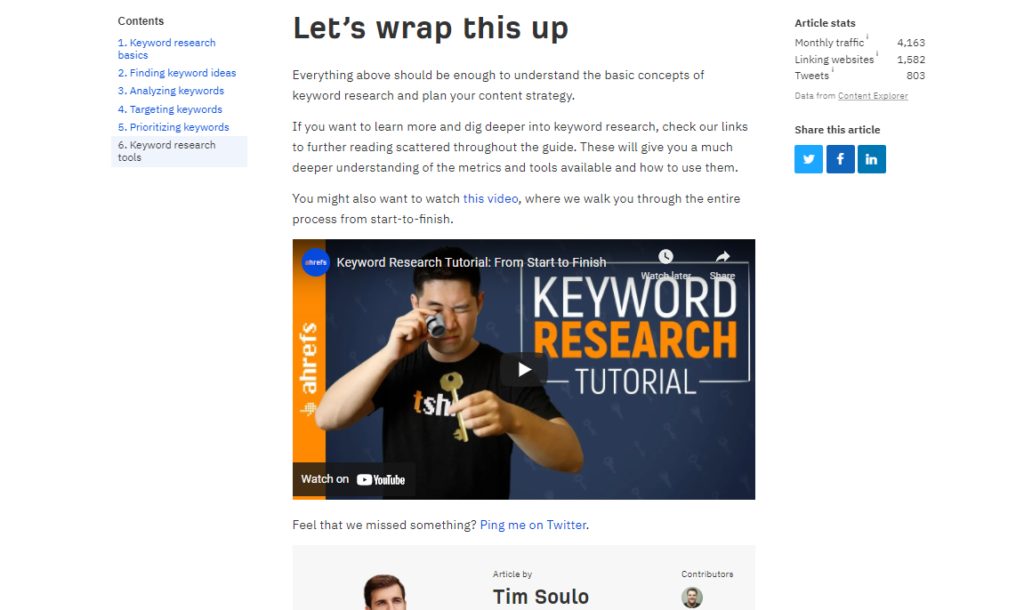

You don’t even need to cover a topic in complete detail in your videos.
For example, if you have an article about “11 Tips for Solo Travelers,” make a video for one or two tips and embed them in your content.
This not only keeps your audience engaged with your content but also helps you grow your YouTube channel much faster.
Are You Ready to Start a YouTube Channel?
Learning how to start a YouTube channel is easy, as I’ve shown you in this article. But growing your channel and generating leads from your YouTube content requires consistent work and a lot of patience.
Consider it a long-term investment in your expertise-based business.
It won’t pay off immediately. But if you stay consistent and keep publishing high-quality content for a few months, you will start seeing results.
If you have any questions, we’d love to answer them in the comments section.
See also:
- 23+ Best YouTube Tools to Grow and Monetize Your Channel
- How To Live Stream On YouTube
- 10 Best Live Streaming Software For Multi-Platform Streaming
Table of Contents



